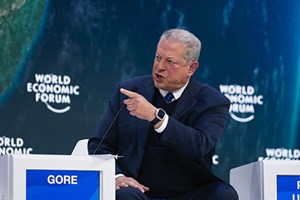First Oil
Well, here we are in a brand new year, amid hopes for continued improvement in global upstream activity. With the three-year anniversary of the worldwide Covid-19 shutdown approaching in March, many folks in the global E&P industry hope that we finally get back to 2019 activity levels and perhaps begin to exceed them.
Accordingly, we have been working this month on our winter drilling forecast, to be published in the February issue. Early indications are that we will see some respectable increases in the U.S. and internationally, perhaps with percentage gains being in the high single digits. No, we won’t see a 35% increase in the U.S. like what was experienced last year (which was off of very low activity in 2021), but a decent gain seems likely in 2023, enough to get close to 2019’s levels. Internationally, where last year’s level bounced back in the low two digits on a percentage basis, we think that activity will be a bit ahead of the U.S. pace and not far from 2022’s rate of increase.
A return of greater exploration work is a trend that’s beginning to show in the data for 2023. That’s a welcome change from the dearth of exploration experienced in the past several years. So, stay tuned for our full forecast in the February issue. We expect to have some good news to share.
The Davos hypocrisy. In an annual spectacle, the world’s business and political elite class again reminded us that we should “do as they say, not as they do.” Despite expressing concern about the environment and climate change during the World Economic Forum, held during Jan. 16-20 (as they did in previous years), the attendees again made a mockery of their policy stands by flying into Davos, Switzerland (site of the event), in a multitude of private jets. Never mind that to reduce carbon footprints, some of these flights could have been replaced by riding Europe’s excellent rail systems or, in a few cases, traveling over relatively short distances by private car.
But common sense is overruled by entitlement and arrogance from this bunch. Indeed, research compiled by Dutch environmental consultancy CE Delft found twice as many private jets flew to and from airports serving Davos during the 2022 WEF meeting, compared with an average week of traffic. Similar activity was expected during the 2023 WEF. The carbon dioxide emissions from those extra flights in 2022 were equal to putting roughly 350,000 gasoline-powered cars on the road for the same week-long period.
The CE Delft study found that among 1,040 private jet flights in or out of airports near Davos, 53% were shorter than 466 miles and 38% were under 310 miles. The shortest flight was estimated at only 13 mi—wouldn’t this have been easier by private car?
Two of this year’s WEF attendees are characters previously mired in private jet travel controversies—U.S. Special Presidential Envoy for Climate John Kerry and former U.S. Vice President Al Gore. True to form, they both spewed bombastic and, at times, somewhat weird rhetoric. “When you start to think about it, it’s pretty extraordinary that we—a select group of human beings because of whatever touched us at some point in our lives—are able to sit in a room and come together and actually talk about saving the planet,” said a starry-eyed Kerry on Jan. 18. “I mean, it’s so almost extraterrestrial to think about ‘saving the planet.’”
Meanwhile, Gore (Fig. 1) ranted and raved about what he thinks are insufficient efforts to rescue the planet. “We’re still putting 162 million tons [of GHGs] into it (the atmosphere) every single day, and the accumulated amount is now trapping as much extra heat as would be released by 600,000 Hiroshima-class atomic bombs exploding every single day on the earth,” declared Gore. “That’s what’s boiling the oceans, creating these atmospheric rivers and the rain bombs, and sucking the moisture out of the land, and creating the droughts, and melting the ice, and raising the sea level, and causing these waves of climate refugees.”

Just remember, folks—the good Mr. Gore is the same bombastic narcissist that once predicted there was a 75% chance that the entire north polar ice cap would likely be gone by 2016.
The UK energy mess. You have to feel for the citizens of the United Kingdom. When it comes to energy, their political leaders are just plain incompetent. After all, current Prime Minister Rishi Sunak is the same character who, as Chancellor of the Exchequer under former PM Boris Johnson, imposed the windfall profit levy that operators are still dealing with, and there is no sign that it will be lifted.
But as tempting as it might be to wish for the Conservative Party to be swept out of power, an alternative Labour Party regime would be even worse for oil and gas. This reality was on full, chilling display, when Labour Leader Kier Starmer (Fig. 2) participated in a WEF panel at Davos and basically declared that if his party gains control of the government, there will be no more oil and gas investment.
One has to wonder whether Mr. Starmer has a gas stove in his house….
The GOP’s needless Speaker debacle. Just when the E&P industry and its associations were looking forward to working with the new Republican majority in the U.S. House to curb the Biden administration’s anti-oil-and-gas agenda, the new session was hijacked by a small band of insolent, petty GOP members. Demanding that Speaker-to-be Kevin McCarthy give in to their list of demands, this group subjected their party, and the country, to 15 rounds of balloting for the Speaker’s chair until they got their way.
While McCarthy finally prevailed in the wee hours of Jan. 7, this exercise delayed the list of issues that the Republican majority intends to address, including the blocking of Biden’s most onerous anti-industry ideas. Indeed, this editor communicated with staffers from two industry associations, who expressed great frustration with this group of GOP holdouts. These members can talk all day long about how important it was to achieve certain internal rules and commitments to particular actions, but the general public doesn’t care. The optics were not good—most of the public only saw a political party that seemed incapable of running itself, much less the government. Let’s hope that they continue to get their act together.
DOE finally admits impacts of Keystone XL cancellation. In their typical operating mode, when they don’t want to admit something they find distasteful, the Biden administration quietly released a Department of Energy (DOE) report in late December—without public announcement—on the impacts of Mr. Biden cancelling the Keystone XL Pipeline project in January 2021. As we all suspected, the adverse impacts were considerable. The report states that 16,000 to 59,00 construction jobs would have been created by the project, with an impact of between $3.4 billion and $9.6 billion. But none of that happened.
The DOE report was mandated by a plank in the Infrastructure Investment and Jobs Act that Congress passed and Biden signed in November 2021. The Biden people did their best to keep the report from being publicized, but word finally leaked out to the offices of Republican Senators Steve Daines (Montana) and Jim Risch (Idaho) on Jan. 5. The two senators quickly issued a coordinated reaction to the report’s findings.
“The Biden administration finally owned up to what we have known all along—killing the Keystone XL pipeline cost good-paying jobs, hurt Montana’s economy and was the first step in the Biden administration’s war on oil and gas production in the United States,” said an obviously aggravated Daines. “Unfortunately, the administration continues to pursue energy production anywhere but the United States.”
An equally agitated Risch stated that “the Department of Energy finally admitted to the worst kept secret about the Keystone Pipeline: President Biden’s decision to cancel the Keystone XL Pipeline sacrificed thousands of American jobs.” He noted that “to make matters worse, his (Biden’s) decision moved the U.S. further away from energy independence and lower gas prices at a time when inflation and gas prices are drastically impacting Americans’ pocketbooks.”
U.S. Grant gets a promotion. During December 2022, the U.S. Congress passed the James M. Inhofe National Defense Authorization Act for Fiscal Year 2023, and President Biden signed it into law on Dec. 23. The bill’s primary purpose is to authorize appropriations for Fiscal Year 2023 for military activities of the Department of Defense, for military construction, and for defense activities of the Department of Energy, plus other purposes.

But what most people don’t know is that a passage in this Act authorizes the posthumous promotion of Union Civil War commanding general and former President Ulysses S. Grant to the unique rank of “General of the Armies” of the U.S. Thus, Grant becomes just the third officer to receive this rank. The others are John Pershing, who was promoted to the rank in 1919 and George Washington, who received a posthumous promotion in 1976.
This General of the Armies rank is higher than the World War II five-star grade of “General of the Army” given to several officers, as well as the five-star “Fleet Admiral” rank given to several admirals. While one would think that this rank equates to six stars, no official insignia has ever been instituted.
IN THIS ISSUE
Special focus: Hydraulic Fracturing. In this month’s lead theme, an author from Universal Pressure Pumping discusses how casing optimization through predictive analysis optimizes fracing efficiency. He says that several factors can be adjusted in a hydraulic fracturing job design to positively affect efficiency and cost. Meanwhile, an author from Future Market Insights says the outlook for shale gas fracing in the U.S., Canada and China is on the upswing, given that technology advances continue to create greater access to abundant supplies.
Managed pressure driling. In a Weatherford article, authors say that approximately 40% of NPT is caused by unplanned issues related to wellbore pressure. Operators can solve many of these problems by applying an MPD-optimized rotary steerable BHA to lower costs and increase safety. In a second feature, a Petrofac expert describes successfully drilling ERD development wells by slot recovery in a depleted field utilizing MPD offshore Malaysia.
G&G technology. In this feature, a Pan American Energy author, along with a consulting geophysicist, explains how reflection seismic continues to be useful in the oil and gas industry, but it can also be applied to help optimize alternative energies. These include searching for lithium and geothermal and determining areas for carbon sequestration and subsequent monitoring.

- The reserves replacement dilemma: Can intelligent digital technologies fill the supply gap? (March 2024)
- The last barrel (February 2024)
- What's new in production (February 2024)
- E&P outside the U.S. maintains a disciplined pace (February 2024)
- U.S. operators reduce activity as crude prices plunge (February 2024)
- U.S. producing gas wells increase despite low prices (February 2024)
- Applying ultra-deep LWD resistivity technology successfully in a SAGD operation (May 2019)
- Adoption of wireless intelligent completions advances (May 2019)
- Majors double down as takeaway crunch eases (April 2019)
- What’s new in well logging and formation evaluation (April 2019)
- Qualification of a 20,000-psi subsea BOP: A collaborative approach (February 2019)
- ConocoPhillips’ Greg Leveille sees rapid trajectory of technical advancement continuing (February 2019)



